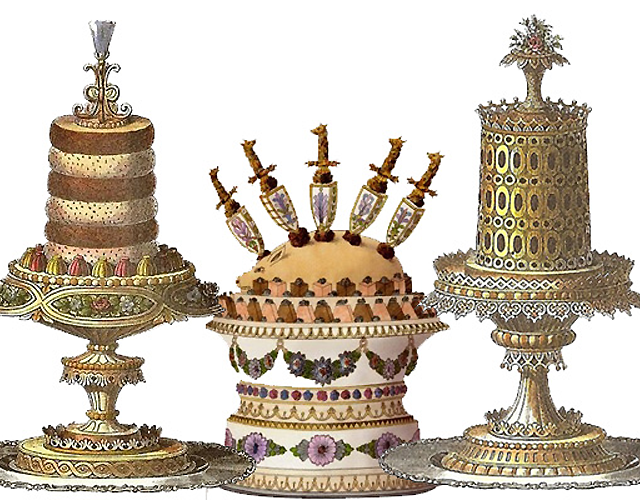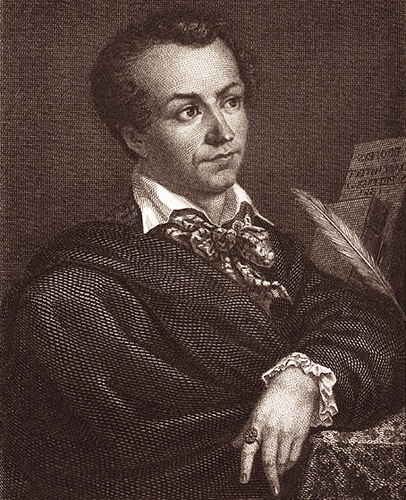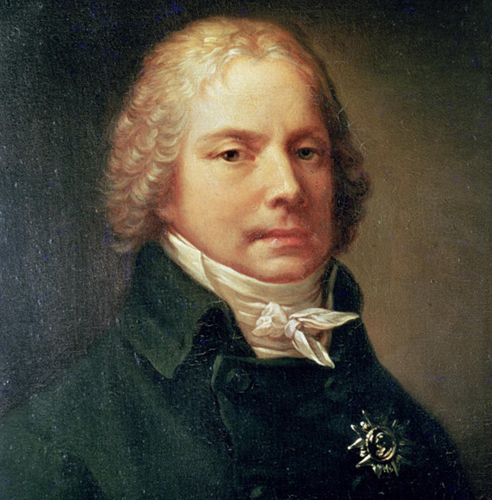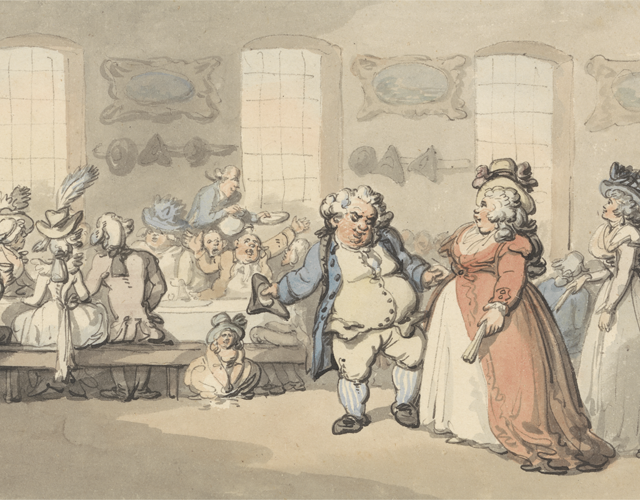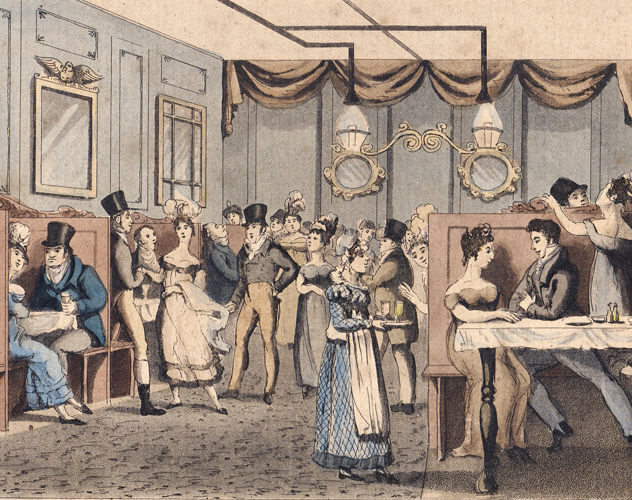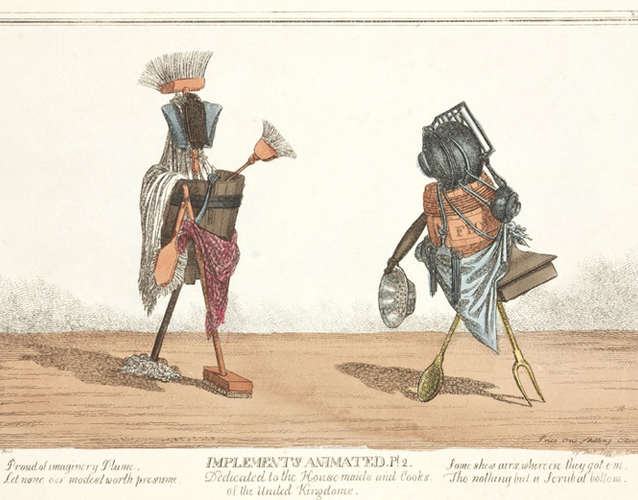The First Celebrity Chef
One of the fun things about writing the Lady Arianna mystery series is adding some of the real life people from the regency era to the books as “color” characters. And trust me, they were some very colorful personalities! The Cocoa Conspiracy, the second book in the series, is partially set at the Congress of Vienna, where the leaders of Europe had gathered to make peace, now that Napoleon had been defeated and exiled to the isle of Elba. Metternich, Talleyrand, Alexander I of Russia—a writer would be hard-pressed to make up more flamboyant personalities. So they play a role in the story. But so does an even more delicious historical figure.
Marie Antoine Carême served as the personal chef to Talleyrand, the charismatic French Foreign Minister, during the time period of my story . . . now forget Bobby Flay and Gordon Ramsay—Carême was the first celebrity chef, and in his astounding career, he cooked not only for Talleyrand but also for Napoleon, the Prince Regent, Tsar Alexander and the Rothschild family. Known as the Chef of Kings, (and the King of Chefs) he revolutionized many elements of haute cuisine, but he is perhaps best known for his amazing skills with pastries. So how could I resist having him and Arianna cross cooking spoons!
The heat is on . . . but I’ll leave you to discover the details of my story on your own. Right now, let me give you a little taste of the real-life adventures of Marie Antoine Carême.
Carême was not born with a silver spoon in his mouth. One of many children, he was, at age ten, abandoned by his family in revolutionary Paris during the tumultuous days of 1793. He was taken in by the owner of a cheap chophouse, where he was put to work in the kitchen. In 1794, Carême was apprenticed to a well-known pâtissier, whose shop was located close to the Palais-Royal . . .and it was here that his genius began to soar!
Pastry shops at the time featured elaborate display windows to attract their clientele, so fanciful creations would be made out of spun sugar, almond paste and dough. Now, Carême was a quiet, serious boy who spent his free time in the Bibliothèque Nationale, where he was fascinated by the architectural books showing ancient ruins, classical monuments and famous buildings. He began to copy these structures out of confectionary materials, creating what came to be known as his signature “Pièces Montées.” Pyramids, castles, cathedral—his art quickly became famous throughout the city and attracted the eye of a notable gourmand—Charles Maurice de Talleyrand-Périgord.
A lover of fine wine, sublime food and beautiful women, Talleyrand commissioned the young Carême to create centerpieces for a number of his lavish parties. Impressed with his skills, he offered him employment at his Chateau Valencay, which was purchased with government funds so that Talleyrand could entertain diplomats and VIPs in proper French style. (Napoleon was famous for his utter disinterest in food, but he was savvy enough to know that sumptuous meals were an important weapon in winning allies around the Continent.)
But first, Talleyrand challenged Carême to come up with a full year’s menu using only seasonal produce. The chef succeeded, and voila—his career rose to even greater heights. Working for Talleyrand, he expanded his repertoire to all the different dishes served at a meal. In the course of honing his skills, he is credited with pioneering a number of innovations. The chef’s toque, and the serving of meals “a la Russe” (with each course brought to the table in succession, as we do today) instead of “a la Francaise” (where all the courses were set out at the beginning of a meal) are among his contributions to cuisine. He also wrote a number of cookbooks, including the multi-volume L’Art de la Cuisine Francais), which redefined haute cuisine.
Carême won further fame by creating a spectacular wedding cake for Napoleon and his new Austrian Empress. A year later he followed it up with a magnificent spun sugar creation for the christening of their infant son—a Venetian gondola crafted in sweet shades of celestial blue!
When Napoleon was forced to abdicate, Tsar Alexander of Russia entered Paris to be part of the diplomatic negotiations, and Talleyrand quickly invited him to stay at his palace on the rue St. Florentin. The Tsar became so fond of Carême’s cooking that when he moved to the Elysee Palace, he asked to borrow the chef for the duration of his visit. (Carême created the now-famous dessert Charlotte Russe in honor of Alexander. Nesselrode Pudding—which became a favorite sweet of the Prince Regent, was named after the Russian Foreign Minister Karl von Nesselrode.)
The next King he served was the future George IV. After Waterloo, Prinny set out feelers to Paris, anxious to engage a top French chef for his own kitchens. Carême agreed to cross the Channel, and for a time cooked in London and the Prince’s Royal Pavilion at Brighton. (I find that a lovely pairing—the fanciful centerpieces gracing the tables of the fairytale Pavilion!) Prinny was said to have remarked that Carême’s luscious foods would be the death of him . . . to which Carême responded, “Your Highness, my concern is to tempt your appetite; yours is to curb it,”
Alas, Carême could not stomach the English weather and returned to France after several years . . . where Tsar Alexander promptly offered him a king’s ransom to come cook in St. Petersburg. That lasted only a short while (I assume the Russian winter was no more palatable than the English rain) and back he came to Paris, where he became the private chef to James Rothschild of the famous banking family.
Carême died at the age of 48, his lungs ruined by years of toiling over charcoal fires. But his legacy of culinary genius has inspired generations of chefs to be artists in the kitchen.

